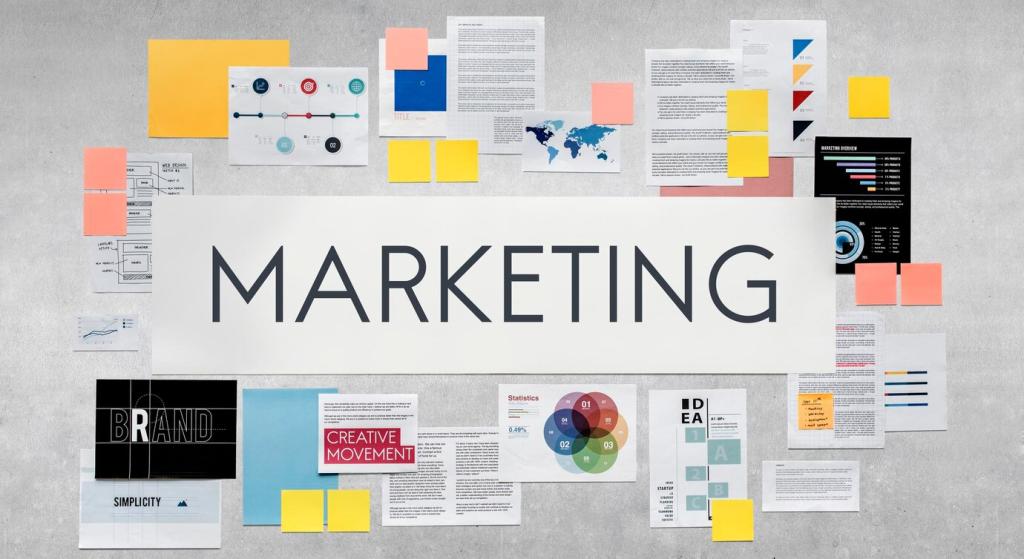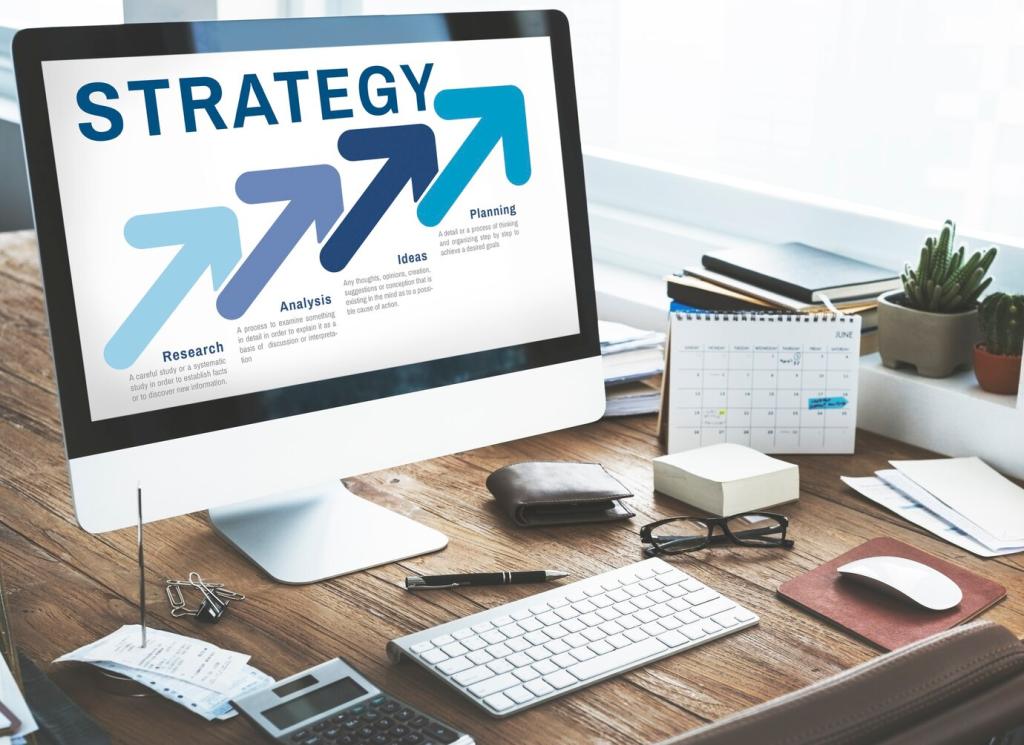From Ideas to Impact: Developing a Strategic Marketing Plan
Chosen theme: Developing a Strategic Marketing Plan. Step into a practical, inspiring guide for turning ambition into focused action, backed by research, clear choices, and measurable outcomes. Join the conversation, subscribe for fresh strategic prompts, and share your biggest planning challenge so we can learn together.
Clarify Vision and Mission
Write a short, human statement of your future impact and day‑to‑day promise. In developing a strategic marketing plan, this clarity prevents scattered initiatives and keeps teams aligned. Share your draft mission and ask your audience if it truly reflects the value you deliver.
Translate Goals into SMART Objectives
Convert ambitious goals into specific, measurable, achievable, relevant, and time‑bound objectives. For example, increase qualified demo requests by 30% in two quarters. This discipline turns visionary aspirations into an actionable roadmap that informs budget, channels, and team priorities.
Secure Stakeholder Alignment Early
Host a cross‑functional workshop to review objectives, assumptions, and constraints. Alignment at the start reduces late‑stage rework and builds ownership. A retail client cut time‑to‑launch by weeks simply by agreeing on a definition of “qualified lead” before any campaigns began.

Conduct Rigorous Market Research
Blend primary interviews with secondary data from credible reports to size opportunities and surface trends. Track search behavior, category growth, and macro forces. One founder discovered underserved midmarket buyers by mapping competitor pricing pages and forum complaints about minimum contract sizes.

Develop Rich, Testable Personas
Go beyond job titles and demographics. Capture motivations, anxieties, buying triggers, and success metrics. In a strategic marketing plan, personas are hypotheses to validate continuously. Invite readers to challenge your persona assumptions and suggest questions you should ask in the next interview round.

Map End‑to‑End Customer Journeys
Visualize how awareness becomes advocacy across touchpoints, emotions, and friction. Note moments where prospects stall or switch. A nonprofit unlocked 2x conversions after adding a simple progress indicator to a three‑step donation flow based on journey friction insights.
Positioning and Differentiation
Define the category you compete in to shape expectations and highlight strengths. Reframing from “project management” to “team orchestration” helped one startup escape feature wars and charge for outcomes. Category clarity sharpens messaging, pricing, and channel focus.


Craft a Crisp Value Proposition
State the audience, the pain, the outcome, and the differentiator in one or two sentences. Keep jargon out. In a strategic marketing plan, this statement anchors creative briefs and prevents drift as teams execute under tight timelines.

Build a Story Arc with Stakes and Resolution
Frame the customer as hero, not your product. Name the obstacle, raise the stakes, and show credible resolution with your solution. A cybersecurity firm doubled webinar attendance by opening with true breach stories and practical, vendor‑neutral steps before introducing features.

Establish a Consistent Tone and Vocabulary
Choose voice principles—confident, clear, empathetic—and document key terms. Consistency builds recognition and speeds content production. Encourage readers to vote on which tone feels most authentic for your brand and share examples of messages that felt especially compelling.

Select Channels by Journey Stage
Map channels to awareness, consideration, and conversion tasks. For example, category education via search and video, trust via webinars, and conversion via targeted email. A disciplined map prevents over‑investing in late‑funnel tactics before demand is primed.

Create a Test‑and‑Learn Budget
Allocate 70% to proven winners, 20% to scalable bets, and 10% to bold experiments. This portfolio approach keeps learning alive without risking core performance. Share one experiment you will fund this quarter and the success criteria you will use.
Measurement, Forecasts, and Feedback Loops
Define Leading and Lagging Indicators
Track early signals like qualified traffic, demo acceptance, and time‑to‑value alongside revenue and retention. This balance prevents premature celebrations or overreactions. A B2B team avoided a costly pivot by noticing that conversion lagged only in one niche segment.
Build Realistic Pipeline Forecasts
Base forecasts on historical conversion rates by stage, seasonality, and capacity constraints. Document assumptions so updates are honest, not political. Invite sales and finance to review the model and co‑own targets to strengthen accountability and trust.
Close the Loop with Continuous Learning
Schedule monthly retros that connect outcomes to hypotheses. Archive learnings in a searchable log to prevent repeating mistakes. Celebrate disproven ideas as progress. Encourage readers to submit a learning they captured last month and how it changed their plan.
Execution Roadmap, Governance, and Risk Management
Sequence initiatives by dependencies and capacity, not excitement. Bundle creative, development, and analytics tasks under each milestone. A health‑tech team cut launch stress by locking quarterly themes and reserving buffer weeks for inevitable surprises.

